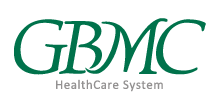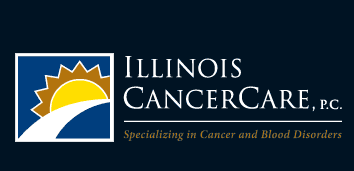Paclitaxel, Nab-paclitaxel, or Ixabepilone With or Without Bevacizumab in Treating Patients With Stage IIIC or Stage IV Breast Cancer
| Status: | Active, not recruiting |
|---|---|
| Conditions: | Breast Cancer, Cancer |
| Therapuetic Areas: | Oncology |
| Healthy: | No |
| Age Range: | 18 - Any |
| Updated: | 4/5/2019 |
| Start Date: | October 13, 2008 |
A Randomized Phase III Trial of Weekly Paclitaxel Compared to Weekly Nanoparticle Albumin Bound Nab-paclitaxel or Ixabepilone With or Without Bevacizumab as First-Line Therapy for Locally Recurrent or Metastatic Breast Cancer
This randomized phase III trial studies the side effects and how well different chemotherapy
regimens with or without bevacizumab work in treating patients with stage IIIC or stage IV
breast cancer. Drugs used in chemotherapy, such as paclitaxel, paclitaxel albumin-stabilized
nanoparticle formulation (nab-paclitaxel), and ixabepilone, work in different ways to stop
the growth of tumor cells, either by killing the cells, by stopping them from dividing, or by
stopping them from spreading. Bevacizumab may block tumor growth by targeting certain cells
and slowing the growth of blood vessels to the tumor. It is not yet known which treatment
regimen is more effective in treating patients with breast cancer.
regimens with or without bevacizumab work in treating patients with stage IIIC or stage IV
breast cancer. Drugs used in chemotherapy, such as paclitaxel, paclitaxel albumin-stabilized
nanoparticle formulation (nab-paclitaxel), and ixabepilone, work in different ways to stop
the growth of tumor cells, either by killing the cells, by stopping them from dividing, or by
stopping them from spreading. Bevacizumab may block tumor growth by targeting certain cells
and slowing the growth of blood vessels to the tumor. It is not yet known which treatment
regimen is more effective in treating patients with breast cancer.
PRIMARY OBJECTIVES:
I. To compare the progression-free survival (PFS) in patients with metastatic breast cancer
receiving nab-paclitaxel versus paclitaxel (control arm).
II. To compare PFS in patients receiving ixabepilone versus paclitaxel.
SECONDARY OBJECTIVES:
I. To compare the objective response rate, duration of response, and time to treatment
failure in patients receiving nab-paclitaxel versus paclitaxel, and to separately compare
these endpoints in patients receiving ixabepilone versus paclitaxel.
II. To compare the 12-month rate of progression in patients receiving nab-paclitaxel versus
paclitaxel, and to separately compare this endpoint in patients receiving ixabepilone versus
paclitaxel.
III. To determine toxicities in patients receiving nab-paclitaxel as compared to paclitaxel,
and in patients receiving ixabepilone as compared to paclitaxel.
IV. To compare overall survival in patients receiving nab-paclitaxel versus paclitaxel, and
to separately compare overall survival in patients receiving ixabepilone versus paclitaxel.
V. To evaluate the relationships between secreted protein, acidic, cysteine-rich (SPARC)
overexpression and changes in blood levels of caveolin-1 (Cav-1) to PFS and secondary
endpoints of response during treatment with nab-paclitaxel as compared to paclitaxel, and
with ixabepilone as compared to paclitaxel.
VI. To evaluate the relationships between changes in blood levels of circulating tumor cells
(CTCs) and circulating endothelial cells (CECs) to PFS and secondary endpoints of response
during treatment with nab-paclitaxel as compared to paclitaxel, and with ixabepilone as
compared to paclitaxel.
VII. To evaluate the association of expression levels of the microtubule associated proteins
tau and beta-tubulin isotype composition with PFS and secondary endpoints of response during
treatment with nab-paclitaxel as compared to paclitaxel, and with ixabepilone as compared to
paclitaxel.
VIII. To investigate a potential cytochrome P450, family 2, subfamily C polypeptide 8, 2, 3
(CYP2C8*2/*3) by paclitaxel interaction with respect to progression-free survival (PFS).
IX. To determine if CYP2C8*2 and CPY2C8*3 are associated with paclitaxel-induced peripheral
neuropathy.
X. To perform exploratory analysis of cytochrome P450, family 3, subfamily A, polypeptide 4
(CYP3A4), cytochrome P450, family 3, subfamily A, polypeptide 5 (CYP3A5), ATP-binding
cassette, sub-family B (MDR/TAP), member 1 (ABCB1) and ATP-binding cassette, sub-family C
(CFTR/MRP), member 2 (ABCC2) polymorphisms with response and toxicity profiles.
XI. To prospectively collect data on sociodemographics, non-cancer morbidities, and receipt
of post-trial therapy to evaluate the role of potential disparities on survival from cancer.
XII. To evaluate the relationship between physical activity behaviors at the time of
enrollment in the protocol and progression-free and overall survival.
XIII. To identify baseline factors that predict the risk of grade 3, 4, or 5 toxicity in
patients receiving treatment with weekly paclitaxel, nab-paclitaxel, or ixabepilone combined
with or without bevacizumab.
XIV. To perform an exploratory analysis of whether other factors included in patient
assessments (either individually or in combination) predict the risk of grade 3, 4, or 5
toxicity in patients receiving weekly paclitaxel, nab-paclitaxel, or ixabepilone combined
with or without bevacizumab, with a specific focus on the relationship between pre-existing
hypertension or neuropathy.
XV. To compare the associations of baseline factors to grade 3, 4, or 5 toxicity in patients
receiving weekly paclitaxel, nab-paclitaxel, or ixabepilone combined with or without
bevacizumab.
XVI. To explore whether longitudinal changes in factors are in association with the
occurrence of grade 3, 4, or 5 toxicities in patients with weekly paclitaxel, nab-paclitaxel,
or ixabepilone combined with or without bevacizumab.
XVII. To explore the association between grade 2-4 neuropathy and longitudinal changes in the
following functional status measures: a) Older Americans Resources and Services (OARS)
Multidimensional Functional Assessment Questionnaire (MFAQ) (Instrumental Activities of Daily
Living [IADL]); b) Medical Outcomes Study (MOS) Physical Functioning; c) Karnofsky
Performance Status Rated Healthcare Professional; d) Timed "Up and Go"; e) OARS Physical
Health Section.
OUTLINE: Patients are randomized to 1 of 3 treatment arms.
ARM A (WEEKLY PACLITAXEL): Patients receive paclitaxel intravenously (IV) over 1 hour on days
1, 8, and 15. Patients may also receive bevacizumab IV over 30-90 minutes on days 1 and 15.
ARM B (WEEKLY NAB-PACLITAXEL): Patients receive paclitaxel albumin-stabilized nanoparticle
formulation IV over 30 minutes on days 1, 8, and 15. Patients may also receive bevacizumab as
in Arm A.
ARM C (WEEKLY IXABEPILONE): Patients receive ixabepilone IV over 60 minutes on days 1, 8, and
15. Patients may also receive bevacizumab as in Arm A. (closed to accrual as of 7/18/11)
In all arms, treatment repeats every 28 days in the absence of disease progression or
unacceptable toxicity.
After completion of study therapy, patients are followed every 6 months for 2 years and then
annually for up to 3 years.
I. To compare the progression-free survival (PFS) in patients with metastatic breast cancer
receiving nab-paclitaxel versus paclitaxel (control arm).
II. To compare PFS in patients receiving ixabepilone versus paclitaxel.
SECONDARY OBJECTIVES:
I. To compare the objective response rate, duration of response, and time to treatment
failure in patients receiving nab-paclitaxel versus paclitaxel, and to separately compare
these endpoints in patients receiving ixabepilone versus paclitaxel.
II. To compare the 12-month rate of progression in patients receiving nab-paclitaxel versus
paclitaxel, and to separately compare this endpoint in patients receiving ixabepilone versus
paclitaxel.
III. To determine toxicities in patients receiving nab-paclitaxel as compared to paclitaxel,
and in patients receiving ixabepilone as compared to paclitaxel.
IV. To compare overall survival in patients receiving nab-paclitaxel versus paclitaxel, and
to separately compare overall survival in patients receiving ixabepilone versus paclitaxel.
V. To evaluate the relationships between secreted protein, acidic, cysteine-rich (SPARC)
overexpression and changes in blood levels of caveolin-1 (Cav-1) to PFS and secondary
endpoints of response during treatment with nab-paclitaxel as compared to paclitaxel, and
with ixabepilone as compared to paclitaxel.
VI. To evaluate the relationships between changes in blood levels of circulating tumor cells
(CTCs) and circulating endothelial cells (CECs) to PFS and secondary endpoints of response
during treatment with nab-paclitaxel as compared to paclitaxel, and with ixabepilone as
compared to paclitaxel.
VII. To evaluate the association of expression levels of the microtubule associated proteins
tau and beta-tubulin isotype composition with PFS and secondary endpoints of response during
treatment with nab-paclitaxel as compared to paclitaxel, and with ixabepilone as compared to
paclitaxel.
VIII. To investigate a potential cytochrome P450, family 2, subfamily C polypeptide 8, 2, 3
(CYP2C8*2/*3) by paclitaxel interaction with respect to progression-free survival (PFS).
IX. To determine if CYP2C8*2 and CPY2C8*3 are associated with paclitaxel-induced peripheral
neuropathy.
X. To perform exploratory analysis of cytochrome P450, family 3, subfamily A, polypeptide 4
(CYP3A4), cytochrome P450, family 3, subfamily A, polypeptide 5 (CYP3A5), ATP-binding
cassette, sub-family B (MDR/TAP), member 1 (ABCB1) and ATP-binding cassette, sub-family C
(CFTR/MRP), member 2 (ABCC2) polymorphisms with response and toxicity profiles.
XI. To prospectively collect data on sociodemographics, non-cancer morbidities, and receipt
of post-trial therapy to evaluate the role of potential disparities on survival from cancer.
XII. To evaluate the relationship between physical activity behaviors at the time of
enrollment in the protocol and progression-free and overall survival.
XIII. To identify baseline factors that predict the risk of grade 3, 4, or 5 toxicity in
patients receiving treatment with weekly paclitaxel, nab-paclitaxel, or ixabepilone combined
with or without bevacizumab.
XIV. To perform an exploratory analysis of whether other factors included in patient
assessments (either individually or in combination) predict the risk of grade 3, 4, or 5
toxicity in patients receiving weekly paclitaxel, nab-paclitaxel, or ixabepilone combined
with or without bevacizumab, with a specific focus on the relationship between pre-existing
hypertension or neuropathy.
XV. To compare the associations of baseline factors to grade 3, 4, or 5 toxicity in patients
receiving weekly paclitaxel, nab-paclitaxel, or ixabepilone combined with or without
bevacizumab.
XVI. To explore whether longitudinal changes in factors are in association with the
occurrence of grade 3, 4, or 5 toxicities in patients with weekly paclitaxel, nab-paclitaxel,
or ixabepilone combined with or without bevacizumab.
XVII. To explore the association between grade 2-4 neuropathy and longitudinal changes in the
following functional status measures: a) Older Americans Resources and Services (OARS)
Multidimensional Functional Assessment Questionnaire (MFAQ) (Instrumental Activities of Daily
Living [IADL]); b) Medical Outcomes Study (MOS) Physical Functioning; c) Karnofsky
Performance Status Rated Healthcare Professional; d) Timed "Up and Go"; e) OARS Physical
Health Section.
OUTLINE: Patients are randomized to 1 of 3 treatment arms.
ARM A (WEEKLY PACLITAXEL): Patients receive paclitaxel intravenously (IV) over 1 hour on days
1, 8, and 15. Patients may also receive bevacizumab IV over 30-90 minutes on days 1 and 15.
ARM B (WEEKLY NAB-PACLITAXEL): Patients receive paclitaxel albumin-stabilized nanoparticle
formulation IV over 30 minutes on days 1, 8, and 15. Patients may also receive bevacizumab as
in Arm A.
ARM C (WEEKLY IXABEPILONE): Patients receive ixabepilone IV over 60 minutes on days 1, 8, and
15. Patients may also receive bevacizumab as in Arm A. (closed to accrual as of 7/18/11)
In all arms, treatment repeats every 28 days in the absence of disease progression or
unacceptable toxicity.
After completion of study therapy, patients are followed every 6 months for 2 years and then
annually for up to 3 years.
Inclusion Criteria:
- Histologic confirmation of invasive cancer of the breast
- Stage IV disease or stage IIIC disease (using American Joint Committee on Cancer
[AJCC] criteria, 6th edition) not amenable to local therapy
- Patients may not have a "currently active" second malignancy other than non-melanoma
skin cancers; patients are not considered to have a "currently active" malignancy if
they have completed therapy and are considered by their physician to be at less than
30% risk of relapse
- Patients with human epidermal growth factor receptor 2 (HER2) negative disease are
eligible; patients with HER2+ disease are eligible providing they have previously
received trastuzumab or lapatinib; documentation of progression on HER2 directed
therapy is not required; Her2/neu status must be known at the time of protocol
registration
- Estrogen receptor (ER) and progesterone receptor (PgR) status must be known at the
time of registration; ER and/or PgR >= 1% cells will be considered positive
- Prior treatment may include adjuvant or neoadjuvant taxane, however, the interval
between completion of adjuvant or neoadjuvant therapy and disease recurrence must be
>= 12 months
- No prior chemotherapy for metastatic breast cancer
- Any number of prior hormonal therapies are allowed; the last dose should have been
administered at least 7 days prior to the initiation of protocol therapy
- Prior radiotherapy must be completed at least 2 weeks prior to study entry
- Treatment with bisphosphonates is allowed and recommended as per American Society of
Clinical Oncology (ASCO) guidelines
- Prior trastuzumab or lapatinib required for patients with HER2 overexpressing tumors
- Prior treatment with bevacizumab is allowed
- Patients must not have had a major surgical procedure, open biopsy, or significant
traumatic injury within 28 days prior to study registration, and must have fully
recovered from any such procedure
- The following are not considered to be major procedures: thoracentesis,
paracentesis, port placement, laparoscopy, thoracoscopy, bronchoscopy, endoscopic
ultrasonographic procedures, mediastinoscopy, skin biopsies, incisional biopsies
and routine dental procedures
- Patients must not have anticipation of need for a major surgical procedure during the
course of the study
- There are no restrictions on core biopsies, placement of a vascular access device or
other minor procedures prior to registration
- Placement of a vascular access device after starting study therapy should be
performed between day 15 and 28 of a treatment cycle (but not less than 48 hours
before the next dose of bevacizumab) to allow for sufficient healing
- Patients must have measurable disease (target lesions): measurable disease is defined
as at least one lesion that can be accurately measured in at least one dimension
(longest diameter to be recorded) as >= 2.0 cm with conventional techniques or as >= 1
cm with spiral computed tomography (CT) scan
- Lesions that are considered non-measurable include the following:
- Bone lesions
- Leptomeningeal disease
- Ascites
- Pleural/pericardial effusion
- Inflammatory breast disease
- Lymphangitis cutis/pulmonitis
- Abdominal masses that are not confirmed and followed by imaging techniques
- Cystic lesions
- Patients with pre-existing peripheral neuropathy >= grade 2 are not eligible for this
study
- Patients must have an Eastern Cooperative Oncology Group (ECOG) (Zubrod) performance
status of =< 1 to be eligible for this trial
- Women must not be pregnant or breast feeding; premenopausal women must have a negative
serum or urine beta-human chorionic gonadotropin (Hcg)
- Patients with a history of Common Terminology Criteria for Adverse Events (CTCAE)
grade >= 3 hypersensitivity to paclitaxel or Cremophor® EL are not eligible
- Patients with a history of abdominal fistula, or intra-abdominal abscess within 6
months prior to study registration are not eligible
- Patients with a history of gastrointestinal (GI) perforation within 12 months prior to
registration are not eligible
- Patients with a history of significant bleeding episodes (e.g., hemoptysis, upper or
lower GI bleeding) within 6 months prior to registration are not eligible
- Patients must not have a history of clinically significant cardiovascular disease that
includes the following:
- Uncontrolled hypertension defined as systolic blood pressure > 150 and/or
diastolic blood pressure > 90 mmHg on antihypertensive medications or any prior
history of hypertensive crisis or hypertensive encephalopathy
- History of myocardial infarction or unstable angina within past 6 months
- New York Heart Association (NYHA) congestive heart failure grade 2 or greater
- Symptomatic peripheral vascular disease
- Significant vascular disease (e.g., aortic aneurysm, aortic dissection) or
arterial thrombotic events
- Patients on full dose anticoagulants must be on a stable dose of warfarin, or be on a
stable dose of low molecular weight (LMW) heparin; patients receiving anti-platelet or
on daily prophylactic dose aspirin are eligible, as are patients receiving stable
doses of anticoagulation for atrial fibrillation
- Patients may not have a history of stroke or transient ischemic attack within 6 months
prior to study registration
- Patients with a history of seizures must be well controlled with standard medication
- Patients must not have progressing or untreated central nervous system (CNS)
metastases or leptomeningeal disease; patients with a history of resected brain
metastases with stable magnetic resonance imaging (MRI) scans for 3 months including
within 4 weeks of study start are eligible; patients with a history of gamma knife
radiosurgery or whole brain radiation with stable MRI scans for 3 months including
within 4 weeks of study start are eligible
- No serious, non-healing wound, ulcer or bone fracture
- Life expectancy of >= 12 weeks
- Granulocytes >= 1,500/ul
- Platelet count >= 100,000/ul
- Creatinine =< 2.0 mg/dL
- Bilirubin < 1.5 mg/dL (unless due to Gilbert's syndrome)
- Transaminases (aspartate aminotransferase [AST], alanine aminotransferase [ALT]) =<
2.5 x upper limit of normal (ULN)
- Serum or urine beta-Hcg negative in premenopausal women of child-bearing potential
- Urine protein =< 1+ protein* or urine protein: creatinine ratio (UPC) < 1
- Patients discovered to have >= 2+ proteinuria at baseline must undergo a 24-hour
urine collection that must demonstrate < 1 g of protein/24 hr or UPC ratio =< 1
to allow participation in the study
We found this trial at
706
sites
Carle Cancer Center Carle Cancer Center delivers comprehensive care through leading-edge technology and advanced research,...
Click here to add this to my saved trials
Harold Alfond Center for Cancer Care MaineGeneral's Harold Alfond Center for Cancer Care (HACCC) is...
Click here to add this to my saved trials
Click here to add this to my saved trials
Brigham and Women's Hosp Boston’s Brigham and Women’s Hospital (BWH) is an international leader in...
Click here to add this to my saved trials
Beth Israel Deaconess Medical Center Beth Israel Deaconess Medical Center (BIDMC) is one of the...
Click here to add this to my saved trials
Tufts Medical Center Tufts Medical Center is an internationally-respected academic medical center – a teaching...
Click here to add this to my saved trials
Roswell Park Cancer Institute Welcome to Roswell Park Cancer Institute (RPCI), America's first cancer center...
Click here to add this to my saved trials
1 South Prospect Street
Burlington, Vermont 05401
Burlington, Vermont 05401
802-656-8990
Click here to add this to my saved trials
1300 Jefferson Park Avenue
Charlottesville, Virginia 22908
Charlottesville, Virginia 22908
434-243-6784

University of Virginia Cancer Center We are fortunate in having state of the art clinical...
Click here to add this to my saved trials
City of Hope Comprehensive Cancer Center City of Hope is a leading research and treatment...
Click here to add this to my saved trials
Hurley Medical Center From its founding in 1908, Hurley Medical Center has devoted itself to...
Click here to add this to my saved trials
Holy Cross Hospital While spirituality plays an essential role in the way that we minister...
Click here to add this to my saved trials
Click here to add this to my saved trials
Bronson Methodist Hospital Our healthcare system serves patients and families throughout southwest Michigan and northern...
Click here to add this to my saved trials
West Michigan Cancer Center In 1994, Borgess Health Alliance and Bronson Healthcare Group opened the...
Click here to add this to my saved trials
1800 West Charleston Boulevard
Las Vegas, Nevada 89102
Las Vegas, Nevada 89102
(702) 383-2000

University Medical Center of Southern Nevada University Medical Center is dedicated to providing the highest...
Click here to add this to my saved trials
North Shore University Hospital North Shore-LIJ Health System includes 16 award-winning hospitals and nearly 400...
Click here to add this to my saved trials
4805 Northeast Glisan Street
Portland, Oregon 97213
Portland, Oregon 97213
(503) 215-1111

Providence Portland Medical Center We strive to give those we serve exceptional, compassionate health care...
Click here to add this to my saved trials
401 College Street
Richmond, Virginia 23298
Richmond, Virginia 23298
(804) 828-0450

Virginia Commonwealth University Massey Cancer Center Founded in 1974, VCU Massey Cancer Center is a...
Click here to add this to my saved trials
Naval Medical Center - San Diego We are the largest and most comprehensive military healthcare...
Click here to add this to my saved trials
Avera Cancer Institute Avera, the health ministry of the Benedictine and Presentation Sisters, is a...
Click here to add this to my saved trials
Click here to add this to my saved trials
Click here to add this to my saved trials
Abington Memorial Hospital Abington Memorial Hospital (AMH) is a 665-bed, regional referral center and teaching...
Click here to add this to my saved trials
Bixby Medical Center ProMedica's Mission is to improve your health and well-being. Which is why,...
Click here to add this to my saved trials
Click here to add this to my saved trials
Click here to add this to my saved trials
Click here to add this to my saved trials
Click here to add this to my saved trials
Click here to add this to my saved trials
Click here to add this to my saved trials
Click here to add this to my saved trials
Click here to add this to my saved trials
AnMedical Health Cancer Center Cancer is the general term for a group of more than...
Click here to add this to my saved trials
Saint Joseph Mercy Hospital St. Joseph Mercy Ann Arbor Hospital is a 537-bed teaching hospital...
Click here to add this to my saved trials
Click here to add this to my saved trials
Click here to add this to my saved trials
Click here to add this to my saved trials
Randolph Hospital Since 1932, Randolph Hospital has been fortunate to employ dedicated and loyal personnel...
Click here to add this to my saved trials
Click here to add this to my saved trials
Click here to add this to my saved trials
Piedmont Hospital For more than a century, Piedmont Healthcare has been a recognized leader in...
Click here to add this to my saved trials
Click here to add this to my saved trials
Northside Hospital Northside Hospital-Atlanta (in Sandy Springs) opened in 1970. The original facility had 250...
Click here to add this to my saved trials
Click here to add this to my saved trials
Click here to add this to my saved trials
Medical Center of Aurora At The Medical Center of Aurora and Centennial Medical Plaza patients...
Click here to add this to my saved trials
Rush - Copley Medical Center Rush-Copley is proud to be the leading provider of health...
Click here to add this to my saved trials
Click here to add this to my saved trials
Click here to add this to my saved trials
Sinai Hospital of Baltimore Sinai Hospital of Baltimore provides a broad array of high-quality, cost-effective...
Click here to add this to my saved trials
Greater Baltimore Medical Center The 255-bed medical center (acute and sub-acute care) is located on...
Click here to add this to my saved trials
Eastern Maine Medical Center Located in Bangor, Eastern Maine Medical Center (EMMC) serves communities throughout...
Click here to add this to my saved trials
Summa Barberton Hospital Summa Barberton Hospital is a full member of Summa Health System and...
Click here to add this to my saved trials
Click here to add this to my saved trials
Click here to add this to my saved trials
Bronson Battle Creek As a proud member of the Battle Creek community, we believe everyone...
Click here to add this to my saved trials
Click here to add this to my saved trials
Click here to add this to my saved trials
Mary Rutan Hospital The hospital was endowed by the sale of a farm in Ridgeway...
Click here to add this to my saved trials
Click here to add this to my saved trials
Click here to add this to my saved trials
Click here to add this to my saved trials
Click here to add this to my saved trials
8901 Rockville Pike
Bethesda, Maryland 20889
Bethesda, Maryland 20889
(301) 295-4000

Walter Reed National Military Medical Center The Walter Reed National Military Medical Center is one...
Click here to add this to my saved trials
Click here to add this to my saved trials
Click here to add this to my saved trials
Click here to add this to my saved trials
Click here to add this to my saved trials
Click here to add this to my saved trials
Click here to add this to my saved trials
Saint Vincent Healthcare The Sisters of Charity of Leavenworth, Kansas, founded St. Vincent Healthcare in...
Click here to add this to my saved trials
Mid Dakota Clinic, PC We're your family clinic, with the doctors you know and trust...
Click here to add this to my saved trials
Saint Alexius Medical Center St. Alexius Medical Center is a 306-bed, full-service, acute care medical...
Click here to add this to my saved trials
Sanford Bismarck Medical Center Whether your stay in our hospital is one day for same...
Click here to add this to my saved trials
Click here to add this to my saved trials
Illinois CancerCare-Bloomington Illinois CancerCare, P.C. is a comprehensive practice treating patients withcancer andblood diseases. Our...
Click here to add this to my saved trials
Click here to add this to my saved trials
Saint Luke's Mountain States Tumor Institute For more than 100 years, St. Luke
Click here to add this to my saved trials
Click here to add this to my saved trials
Dana-Farber Cancer Institute Since it’s founding in 1947, Dana-Farber has been committed to providing adults...
Click here to add this to my saved trials
Massachusetts General Hospital Cancer Center An integral part of one of the world
Click here to add this to my saved trials
Click here to add this to my saved trials
Boulder Community Hospital Founded in 1922 as a community-owned and operated not-for-profit hospital, Boulder Community...
Click here to add this to my saved trials
Toledo Clinic Cancer Centers-Bowling Green Our doctors evaluate and make recommendations regarding cancer treatment for...
Click here to add this to my saved trials
Bozeman Deaconess Hospital Bozeman Deaconess Hospital is a Joint Commission certified, licensed Level III trauma...
Click here to add this to my saved trials
Click here to add this to my saved trials
Click here to add this to my saved trials
Click here to add this to my saved trials
Click here to add this to my saved trials
Bryn Mawr Hospital Bryn Mawr Hospital, a nationally recognized community teaching hospital, is conveniently located...
Click here to add this to my saved trials
Click here to add this to my saved trials
Click here to add this to my saved trials
Click here to add this to my saved trials
Click here to add this to my saved trials
Fairview Ridges Hospital Fairview Ridges Hospital is a 150-bed, Level III Trauma Care facility, offering...
Click here to add this to my saved trials
Click here to add this to my saved trials
400 South Clark Street
Butte, Montana 59701
Butte, Montana 59701
406-723-2500

Saint James Community Hospital and Cancer Treatment Center St. James Healthcare has played an important...
Click here to add this to my saved trials
Click here to add this to my saved trials
Illinois CancerCare - Canton Illinois CancerCare is one of the largest private oncology and hematology...
Click here to add this to my saved trials
Click here to add this to my saved trials










































